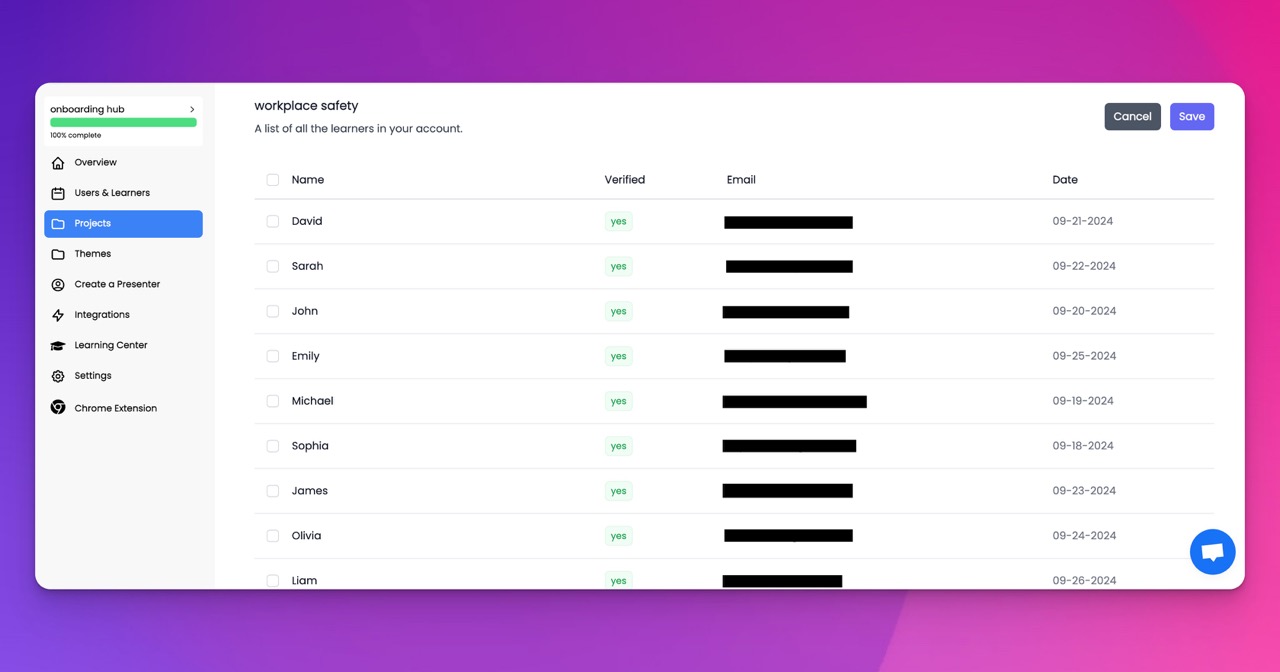🎉 Trainday now integrates with Zendesk and Hubspot 🎉 Trainday now integrates with Zendesk and Hubspot 🎉 Trainday now integrates with Zendesk and Hubspot
🎉 Trainday now integrates with Zendesk and Hubspot
🎉 Trainday now integrates with Zendesk and Hubspot
Contact
Hit the Ground Running - Transforming Onboarding with Data-Driven Efficiency
In today's competitive business landscape, an efficient onboarding process is key to empowering new hires to hit the ground running. "Hit the Ground Running" focuses on the transformative impact of using data-driven strategies to streamline the onboarding process, enabling new employees to quickly become productive, engaged members of the team. Leveraging data not only speeds up the onboarding timeline but also enhances the overall experience, ensuring that new hires are effectively integrated into their roles and the company culture. This blog post examines the critical role that data plays in optimizing onboarding processes, facilitating a quicker transition from new hire to high-performing employee.
Leveraging Data for Precision Onboarding
Data-driven onboarding starts by gathering and analyzing information from a variety of sources to create a customized and efficient integration plan for each new hire.
Targeted Skill Assessment
Utilizing data from skills assessments conducted during the hiring process, companies can tailor the onboarding experience to address specific gaps or to further develop strengths from day one. This targeted approach ensures that each new hire receives exactly the training they need, without spending time on unnecessary or redundant sessions.
Role-Specific Content Customization
By analyzing data related to job roles and past performance metrics of similar positions, organizations can develop role-specific onboarding paths. These paths are designed to equip new hires with the knowledge and skills essential for their specific roles, enabling them to contribute effectively much sooner.
Adaptive Learning Through Real-Time Data
Integrating real-time data feedback within the onboarding process allows for a dynamic and adaptive learning environment, which responds to the needs of the new hire as they progress.
Dynamic Training Adjustments
Adaptive learning technologies utilize real-time data to adjust the training process according to the pace and learning style of the new hire. If a new employee masters a concept quickly, the system can advance them to more complex topics, or provide additional support if they are struggling.
Continuous Feedback Loops
Incorporating continuous feedback mechanisms throughout the onboarding experience helps refine the process. New hires can provide real-time feedback on their training experiences, which can be used to make immediate improvements. This ongoing input ensures that the onboarding process remains responsive and effective.
Enhancing Engagement and Retention
Data-driven strategies also play a crucial role in enhancing engagement during the onboarding process, which is key to long-term retention.
Personalized Engagement Plans
Based on data collected about new hires’ preferences and previous engagement patterns, personalized engagement plans can be developed. These plans include team introductions, mentorship programs, and involvement in key projects, all tailored to maximize engagement from the start.
Gamification and Interactive Learning
Incorporating elements of gamification and interactive learning into the onboarding process can significantly increase engagement and motivation. Data insights help tailor these elements to match the interests and motivational triggers of new hires, making learning more fun and impactful.
Measuring Success and Optimizing Strategies
The effectiveness of data-driven onboarding processes must be continuously measured and optimized based on specific outcomes.
Monitoring Key Performance Indicators (KPIs)
Essential KPIs such as time-to-productivity, early-stage job performance, and employee satisfaction are tracked to assess the impact of the onboarding program. These metrics help quantify the benefits of data-driven onboarding and identify areas for further improvement.
Longitudinal Performance Tracking
Long-term tracking of employees who have undergone data-driven onboarding provides insights into the effectiveness of these strategies over time. This information is crucial for validating the approach and adjusting onboarding strategies to align with evolving business goals and workforce dynamics.
Conclusion
"Hit the Ground Running: Transforming Onboarding with Data-Driven Efficiency" highlights the importance of integrating data into the onboarding process. By doing so, companies can ensure that new hires are not only quickly acclimated to their new roles but are also highly engaged and poised for success. This approach not only accelerates productivity but also enhances employee satisfaction and retention, setting a solid foundation for long-term organizational success.
Accelerate Compliance.
Deliver OSHA-Ready Courses Instantly.
Empower your team with data-driven training solutions tailored to your industry's safety standards. Stay compliant, reduce risks, and boost productivity with AI-powered course creation.
